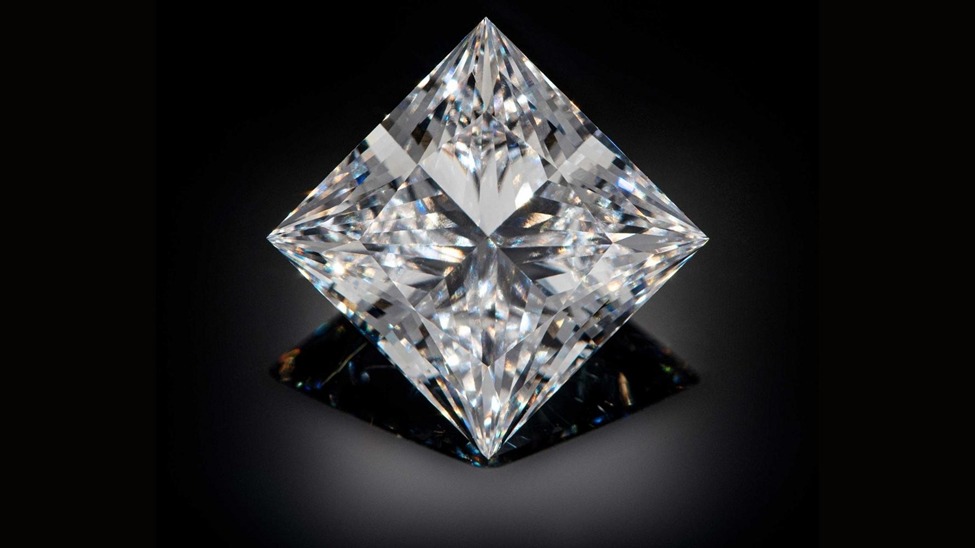
Lab Grown Diamonds as a Gemstone with Versatile Applications
Lab-grown diamonds have risen as a game-changer in the gemstone industry, redefining the way we perceive and utilize these precious gems. No longer limited to traditional jewelry, they have transcended their origins to find a myriad of versatile applications across various sectors. This article embarks on a journey to unravel the incredible potential of lab-grown diamonds, shedding light on their transformative role in fields far beyond the realm of traditional adornment.
The Science behind Lab Grown Diamonds
The production of lab-grown diamonds relies on a sophisticated scientific process. There are two primary methods: Chemical Vapor Deposition (CVD) and High-Pressure High-Temperature (HPHT). In CVD, a hydrocarbon gas is decomposed into carbon atoms, which then accumulate on a diamond seed to form a crystal. HPHT involves subjecting a small diamond seed to extreme heat and pressure to stimulate diamond growth. Both techniques require precise control of temperature, pressure, and gas composition to create high-quality diamonds.
Lab-grown diamonds closely resemble their natural counterparts chemically and physically, with the same carbon crystal structure. They share the same optical properties, including brilliance and hardness. However, subtle differences exist. Lab-grown diamonds may contain fewer inclusions, making them nearly flawless. Isotope composition can also vary slightly, enabling scientists to distinguish between natural and Novita lab grown diamonds. This scientific achievement opens doors to ethical, sustainable, and economically viable alternatives in the gemstone industry.
Lab Grown Diamonds in Jewelry
Lab-grown diamonds have made a significant impact in the world of jewelry. Traditionally, they’ve been embraced for their beauty and brilliance in engagement rings, necklaces, earrings, and a wide range of adornments. Their physical and optical properties closely mirror those of natural diamonds, making them indistinguishable to the naked eye, rendering them an ideal choice for jewelry enthusiasts seeking affordable yet stunning pieces.
What sets lab-grown diamonds apart in the jewelry industry is their ethical and sustainable profile. These gems are created in controlled environments, eliminating the risk of “blood” or “conflict” diamonds and the harmful ecological consequences of diamond mining. Additionally, their production demands less energy and reduces the carbon footprint. This ethical and sustainable dimension of lab-grown diamonds resonates with consumers who are increasingly conscious of the origin and impact of the products they purchase, making them a remarkable alternative in the jewelry market.
Industrial Applications
Lab-grown diamonds have expanded their horizons beyond adornments and are proving indispensable in various industrial applications. One of their notable roles is in precision cutting and manufacturing tools. Their exceptional hardness and wear resistance make them ideal for creating cutting-edge equipment. Whether it’s machining complex components, drilling through hard materials, or producing high-precision blades, lab-grown diamond tools offer unrivaled durability and precision, significantly enhancing manufacturing processes.
Lab-grown diamonds also find a crucial place in electronic and semiconductor manufacturing. Thin diamond films are used in a range of applications, primarily as coatings for cutting tools and heat sinks for electronic devices. Their exceptional thermal conductivity efficiently dissipates heat, preventing overheating and enhancing the performance and lifespan of electronic components. This is particularly critical in the production of advanced microchips and semiconductor devices, where thermal management is paramount. In these industrial settings, lab-grown diamonds are elevating efficiency and quality, positioning them as game-changers in manufacturing technology.
Medical and Scientific Advancements
Lab-grown diamonds are making significant contributions to medical and scientific advancements. In the realm of medicine, these diamonds play a pivotal role. They are used in surgical tools, harnessing their remarkable hardness and precision cutting capabilities for minimally invasive procedures. Lab-grown diamond-coated instruments ensure greater precision and efficiency during surgeries, reducing patient trauma and recovery times. Moreover, diamond coatings on medical implants and prosthetics enhance their biocompatibility and durability, ultimately improving patient outcomes.
Scientific research and laboratory instruments are also reaping the benefits of lab-grown diamonds. These gems are used in various high-tech applications, including in the construction of advanced lab instruments. Their use extends to scanning probes, lasers, and sensors, where their exceptional mechanical properties and durability are invaluable. Lab-grown diamonds have become an essential component in the scientific community, enhancing the accuracy and reliability of instruments in various research domains, from materials science to quantum physics. This demonstrates the multifaceted potential of lab-grown diamonds in advancing both healthcare and scientific progress.
Environmental and Cost Benefits
The adoption of lab-grown diamonds presents a compelling case for both environmental sustainability and cost-effectiveness. One of the most significant advantages of lab-grown diamonds is their reduced environmental impact. Unlike traditional diamond mining, which often results in habitat destruction and associated ecological consequences, lab-grown diamonds are created in controlled, energy-efficient laboratory settings. This minimizes the carbon footprint and mitigates the ethical concerns related to “blood” or “conflict” diamonds. Lab-grown diamonds are a more environmentally responsible choice, appealing to consumers who prioritize eco-consciousness.
Lab-grown diamonds also shine in terms of cost-effectiveness and accessibility. The controlled production process allows for greater predictability in size, quality, and availability. This predictability means they can be more affordable, making them an attractive option for consumers and industries alike. Compared to natural diamonds, which can vary widely in price due to rarity and demand, lab-grown diamonds offer consistent value. This cost-efficiency and accessibility are driving their increasing popularity and transforming the diamond industry, making them an ethical, sustainable, and budget-friendly alternative to natural diamonds.
Challenges and Future Prospects
Lab-grown diamonds, while promising, face challenges in gaining widespread adoption. The production of larger high-quality diamonds remains a challenge, as does accurately replicating the full range of natural diamond colors and characteristics. Scaling up production to meet growing demand and ensuring cost competitiveness are also hurdles.
The future of lab-grown diamonds holds tremendous potential. Ongoing research is focused on addressing these challenges, which includes the development of larger diamonds, perfecting color replication, and exploring new applications. From revolutionizing healthcare to enhancing manufacturing precision, lab-grown diamonds continue to expand their horizons, offering innovative, sustainable, and ethical solutions for diverse industries.
Conclusion
Lab-grown diamonds have orchestrated a transformative journey, transcended traditional jewelry and became a cornerstone in various industries, including technology, medicine, and manufacturing. Their revolutionary impact is undeniable. These versatile gems embody sustainability and ethical sourcing, promising a brighter future. As the world seeks more eco-friendly and ethical alternatives, lab-grown diamonds have emerged as a shining beacon of innovation, offering diverse, sustainable, and promising solutions across a range of sectors.







